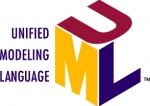Common Emitter is an expression to indicate exactly an electrical configuration where a part on three of BJT transitor (and only that kind of transistors) is used as reference for the other two.
So keep in mind it's impossible to make confusion with other contexts.
But... what's an emitter, or a transistor? why bjt? I'm instead confused!
And you're right if never seen one of them, neither in theory exposition.
Generally a transistor is a semiconductor device which you can regulate voltage and/or current in output with; maybe its name's explanation could give a bit of information more: transistor is the contraction of "transfer resistor".
According to their inventors it's been so called "because it's a resistor or semiconductor device that can amplify electrical signals as they are transferred through it from input to output terminals". ...continue reading "Common Emitter. Why and how to"



